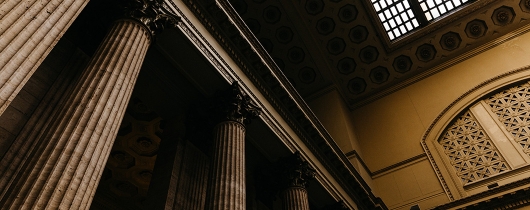Witnesses and Bias | Testigos y Sesgos

St. Cyril of Jerusalem
Exodus 32:7-14; John 5:31-47
Under the law of Moses, the testimony of two or three witnesses was necessary to establish a fact in a case or controversy (Deuteronomy 19:15). To those who opposed him and his ministry, Jesus offered four witnesses that could testify for him and the truth of what he said and did: (1) John the Baptist; (2) his works (miracles); (3) the Father; and (4) the Scriptures.
Despite these witnesses, however, some people still refused to accept him. They remained suspicious of what they considered his unorthodox teachings and deeds (e.g., healing on the Sabbath). They were scandalized that he claimed God as his Father.
Jesus would have called them “stiff-necked.” Today we might say they suffered from confirmation bias. That’s our tendency to accept and even magnify evidence that reinforces our existing beliefs and prejudices and to ignore, discount, and reject evidence that challenges those beliefs and prejudices. Confirmation bias is what helps to fuel the algorithmic engines of social media, and it drives viewers to news channels like MSNBC, Fox, and OAN.
The people of ancient Israel suffered from a different bias and need. They wanted God to be like the gods of Egypt and other lands: something visible, tangible, and readily accessible. They built and worshipped a golden calf. Even though God had brought them out of Egypt with signs and wonders and was present to them in a pillar of fire and cloud, they did not understand that God wanted a relationship with them that was intimate, personal, and trusting.
In the course of time, Jesus became the ultimate witness of God’s love and devotion to us. The billions of his followers who have lived and died since then stand as witnesses with him and for him. jc
------------------------------------------------------------------------------------------------------------------
San Cirilo de Jerusalén
Éxodo 32:7-14; Juan 5:31-47
Según la ley de Moisés, era necesario el testimonio de dos o tres testigos para establecer un hecho en un caso o controversia (Deuteronomio 19:15). A los que se oponían a él y a su ministerio, Jesús les ofreció cuatro testigos que podían dar testimonio de él y de la verdad de lo que decía y hacía: (1) Juan el Bautista; (2) sus obras (milagros); (3) el Padre; y (4) las Escrituras.
Sin embargo, a pesar de estos testimonios, algunas personas seguían negándose a aceptarlo. Seguían sospechando de lo que consideraban sus enseñanzas y obras poco ortodoxas (por ejemplo, curar en sábado). Se escandalizaban de que afirmara que Dios era su Padre.
Jesús les habría llamado "duros de cerviz". Hoy podríamos decir que sufrían de un sesgo de confirmación. Esa es nuestra tendencia a aceptar e incluso magnificar la evidencia que refuerza nuestras creencias y prejuicios existentes y a ignorar, descartar y rechazar la evidencia que desafía esas creencias y prejuicios. El sesgo de confirmación es lo que ayuda a alimentar los motores algorítmicos de las redes sociales, y conduce a los espectadores a canales de noticias como MSNBC, Fox y OAN.
El pueblo del antiguo Israel sufría un sesgo y una necesidad diferentes. Querían que Dios como los dioses de Egipto y otras tierras: algo visible, tangible y fácilmente accesible. Construyeron y adoraron un becerro de oro. A pesar de que Dios los había sacado de Egipto con señales y prodigios y estaba presente ante ellos en una columna de fuego y nubes, no entendieron que Dios quería una relación con ellos que fuera íntima, personal y de confianza.
Con el paso del tiempo, Jesús se convirtió en el máximo testigo del amor y la devoción de Dios hacia nosotros. Los miles de millones de sus seguidores que han vivido y muerto desde entonces son testigos con él y para él. jc




